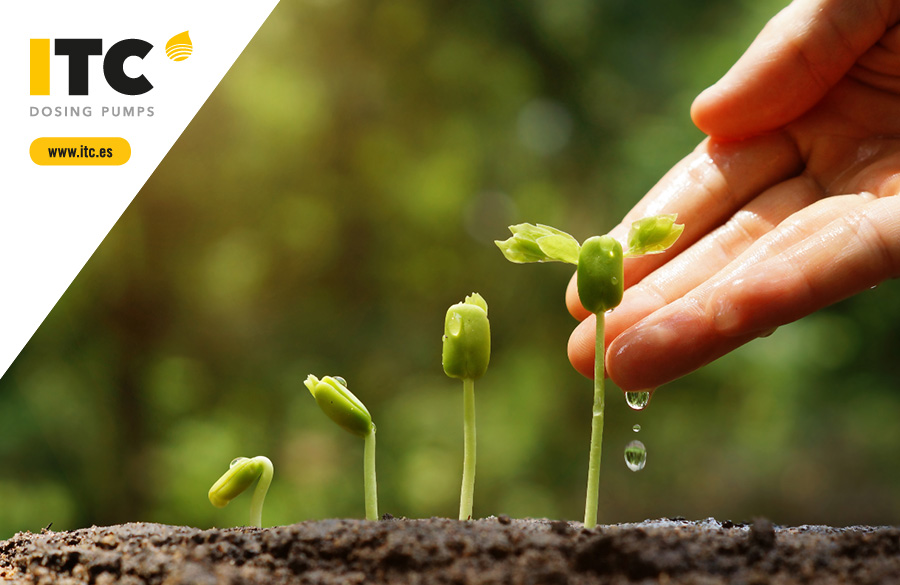All the advantages of the fertilisation process using dosing pumps
- 28/02/2023
- NAL 3
- No Comments

Fertilisation is the process through which we add essential nutrients to the soil with the aim of improving its fertility and, consequently, the growth and development of plants. It’s important to note that plants require a wide range of nutrients to thrive. If the soil lacks necessary nutrients, plant growth may be stunted, and fruit or flower production may be reduced.
Proper fertilisation can provide plants with the necessary nutrients for healthy growth and optimal production. Additionally, fertilisation can improve soil structure, enhance water retention capacity, and boost microbial activity in the soil.
However, while fertilisation can improve overall soil ecosystem health, it’s also important to consider that excessive fertilisation can be detrimental to plants and the environment. Therefore, it’s crucial to apply fertilisers appropriately and in the correct amounts.
Fertilisation Process with Dosing Pumps
Fertilisation using dosing pumps is a technique employed in agriculture and gardening to supply the exact amount of fertiliser or chemical needed for plants. These dosing pumps work by injecting a fertiliser solution into a stream of water through an irrigation system.
This way, we manage to apply the fertilizer precisely and, above all, uniformly. This is especially important as it minimises waste and reduces production costs.
Using dosing pumps, we can also adjust the amount of fertilisers or chemicals applied according to the specific needs of each crop or plant. This helps improve crop quality and reduce environmental pollution.
Types of Fertiliser Dosing Pumps
Fertiliser dosing pumps enable fertiliser injection into the irrigation network. There are three main types of fertiliser dosing pumps:
Las bombas dosificadoras de abono permiten la inyección de abono en la red de riego. Distinguimos entre tres tipos de bombas dosificadoras:
- Diaphragm dosing pump: A diaphragm displaces the liquid in a chamber with both inlet and outlet valves. When the diaphragm moves backward, it draws liquid into the chamber from the inlet valve. Conversely, when the diaphragm moves forward, it pushes the liquid out of the chamber through the outlet valve.
- Piston dosing pump: Similar to the diaphragm pump, but a piston replaces the diaphragm.
- Hydraulic dosing pump: These pumps operate by creating hydraulic pressure that moves a piston or diaphragm. They are known for their ability to work at high pressures, pump non-lubricating liquids or even liquids with small particles, and operate dry without damaging the pump.
ITC Dosing Pumps, Leaders in Fertigation
Through fertigation, fertilisers are applied and distributed through irrigation water, enhancing nutrient absorption and achieving more efficient and precise plant growth. This method offers benefits such as uniform distribution of fertiliser throughout the crop, increased production, and optimal use of fertilisers and products.
ITC dosing pumps, leaders in fertigation, ensure better utilisation of water, energy, and fertilisers. Additionally, through dosing, the exact amount of nutrients needed by plants is administered, helping to save on fertiliser and other resource usage.
Discover all the details about ITC dosing pumps. CONTACT us now!


